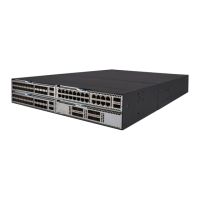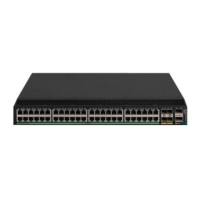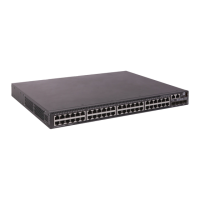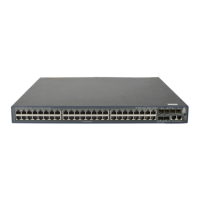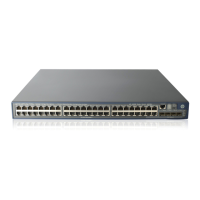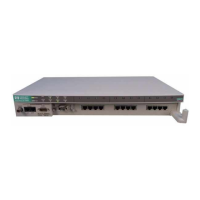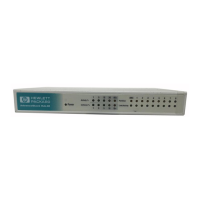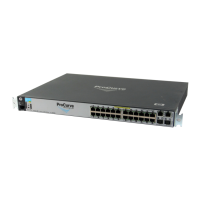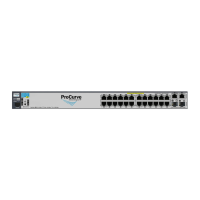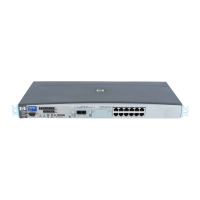89
2. Enter OSPF view.
ospf
[
process-id |
router-id
router-id |
vpn-instance-name ] *
N/A
3. Enter area view.
area
area-id
N/A
4. Configure area
authentication mode.
• Configure MD5 authentication:
authentication-mode { hmac-md5 |
md5 } key-id { cipher | plain } string
• Configure simple authentication:
authentication-mode simple
{ cipher | plain } string
• Configure keychain authentication:
authentication-mode keychain
keychain-name
By default, no
authentication is
configured.
For information about
keychains, see Security
Configuration Guide.
Configuring OSPF interface authentication
You must configure the same authentication mode and key on both the local interface and its peer
interface.
To configure OSPF interface authentication:
1. Enter system view.
N/A
2. Enter interface view.
interface-type interface-number
N/A
3. Configure interface
authentication mode.
• Configure simple authentication:
ospf authentication-mode simple
{ cipher | plain } string
• Configure MD5 authentication:
ospf authentication-mode
{ hmac-md5 | md5 } key-id { cipher |
plain } string
• Configure keychain authentication:
ospf authentication-mode keychain
keychain-name
By default, no
authentication is
configured.
For information about
keychain, see Security
Configuration Guide.
Adding the interface MTU into DD packets
By default, an OSPF interface adds a value of 0 into the interface MTU field of a DD packet rather
than the actual interface MTU. You can enable an interface to add its MTU into DD packets.
To add the interface MTU into DD packets:
1. Enter system view.
system-view
N/A
2. Enter interface view.
interface
interface-type
interface-number
N/A
3. Enable the interface to add
its MTU into DD packets.
ospf mtu-enable
By default, the interface adds an
MTU value of 0 into DD packets.

